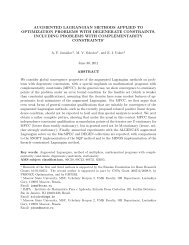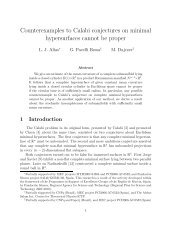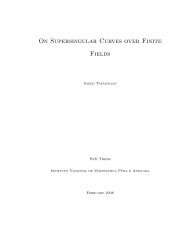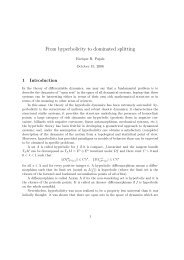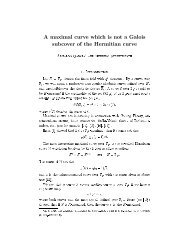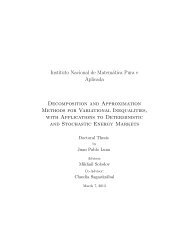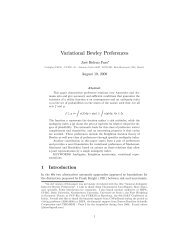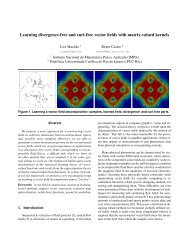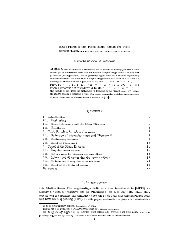a reduced model for internal waves interacting with submarine ...
a reduced model for internal waves interacting with submarine ...
a reduced model for internal waves interacting with submarine ...
You also want an ePaper? Increase the reach of your titles
YUMPU automatically turns print PDFs into web optimized ePapers that Google loves.
0.6<br />
0.5<br />
0.4<br />
0.3<br />
η<br />
0.2<br />
0.1<br />
0<br />
−0.1<br />
0 10 20 30 40 50 60<br />
ξ<br />
Figure 4.14: Pulse propagating over a synthetic periodic rapid-varying topography.<br />
Dotted line: numerical solution <strong>for</strong> the WNCM using RK4 <strong>with</strong> N= 1024 <strong>for</strong><br />
t=35.3429, dashed line: initial condition, solid line: flat bottom exact solution.<br />
4.5 Computing solitary <strong>waves</strong> solutions<br />
Now we present two examples of <strong>internal</strong> solitary <strong>waves</strong> from the Regularized<br />
ILW equation evolving according to the WNFM. That is, we take as initial condition<br />
<strong>for</strong> the WNFM a solitary wave from its unidirectional reduction. We expect<br />
the wave to behave almost like a solitary wave. In particular, the balance between<br />
nonlinearity and dispersion should be maintained and the wave should travel <strong>with</strong>out<br />
a significant change of shape. The velocity of propagation should be similar<br />
to that in the ILW equation. The numerical solutions are obtained by the RK4<br />
numerical solver <strong>for</strong> the WNFM <strong>with</strong>ρ 1 = 1,ρ 2 = 2,β=0.0001,α=0.01,<br />
N= 256,∆ξ=2l/N= 0.1963,l=8π,∆t=∆ξ=0.1963.<br />
Example 4.8. In Fig. 4.15 the evolution of an approximate solitary wave solution<br />
is shown. As initial condition <strong>for</strong>η, the parametersθ = π/8, a = −0.09953<br />
81



